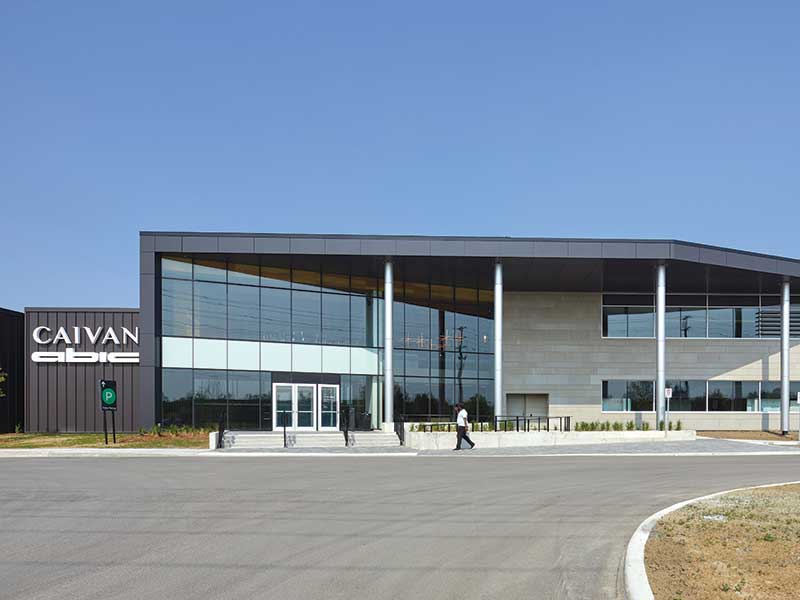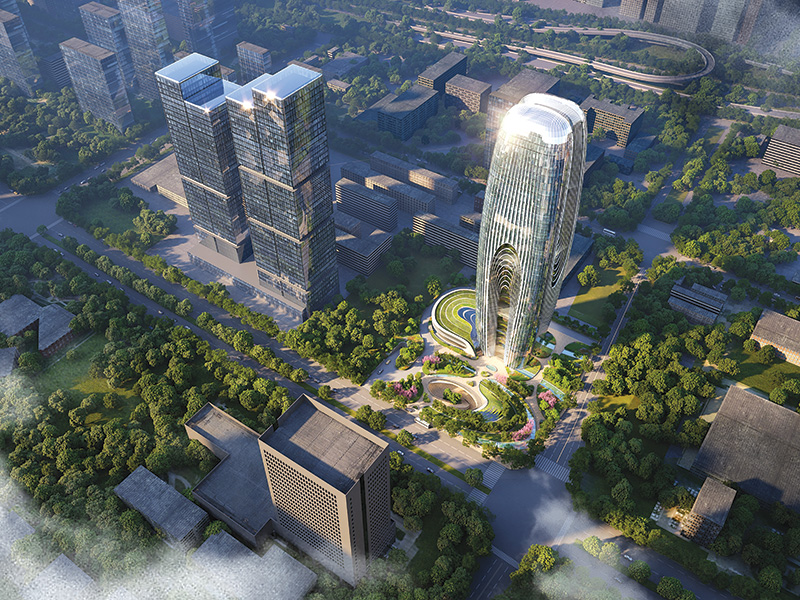The highly sustainable campus Eclipse is designed to foster an inspirational work environment. The 60-metre-high building offers approx. 27,000 m2 of light-flooded, contemporary office space with approx. 1,200 workplaces. In addition, the interior, that spans 16 storeys, houses communication and experience areas, while lively atria form the communicative backbone of the building. The overall vision for this vertical campus is one of transparency and an open gesture towards the surrounding neighbourhood.
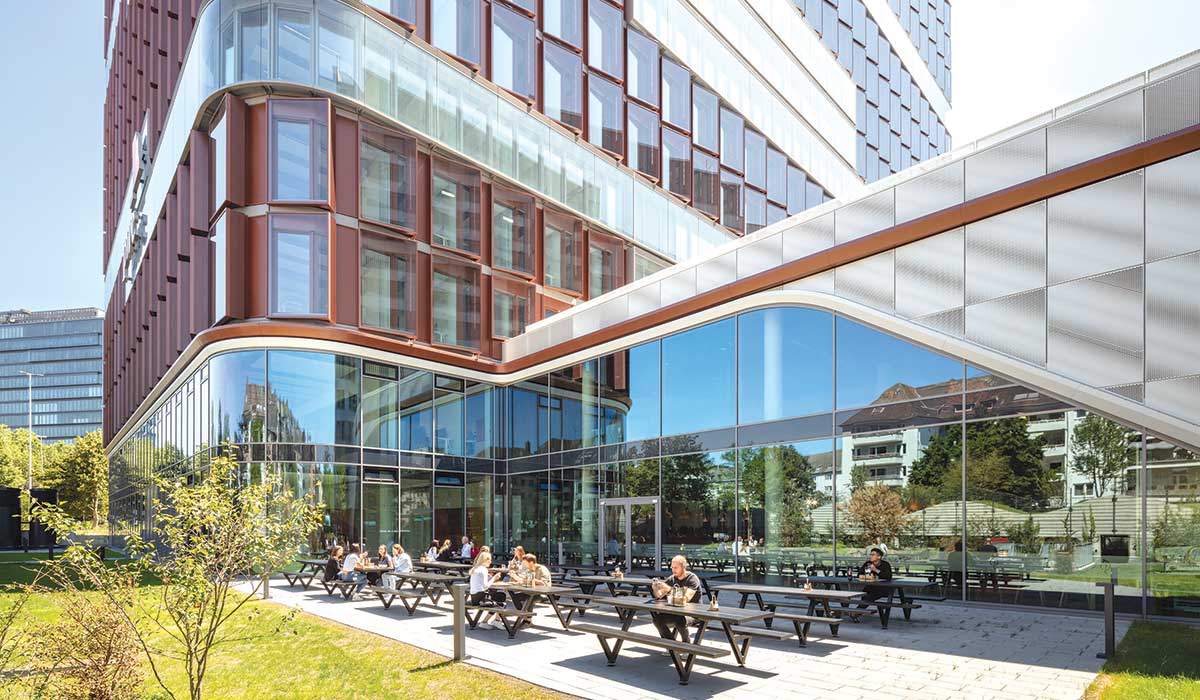
The tower follows the shape of the site with a triangular floorplan and stands on a two-storey podium, while two basement levels provide the service entrance, delivery, parking for 455 vehicles and a 200-bicycle storage.
With its 360-degree facade, Eclipse is integrated with the existing site. The podium building, with its accessible rooftop garden, is directly connected with the lower section of this neighbouring building. The entrance is accentuated with a diagonally framed setback, accentuated by contrasting opaque and transparent portions of the facade.
To emphasise the main entrance and to distinguish the volumes of the podium and the tower, the tip of the tower cantilevers approximately 11m above the driveway. The seemingly floating tower volume is supported by a three-dimensional V-shaped column.
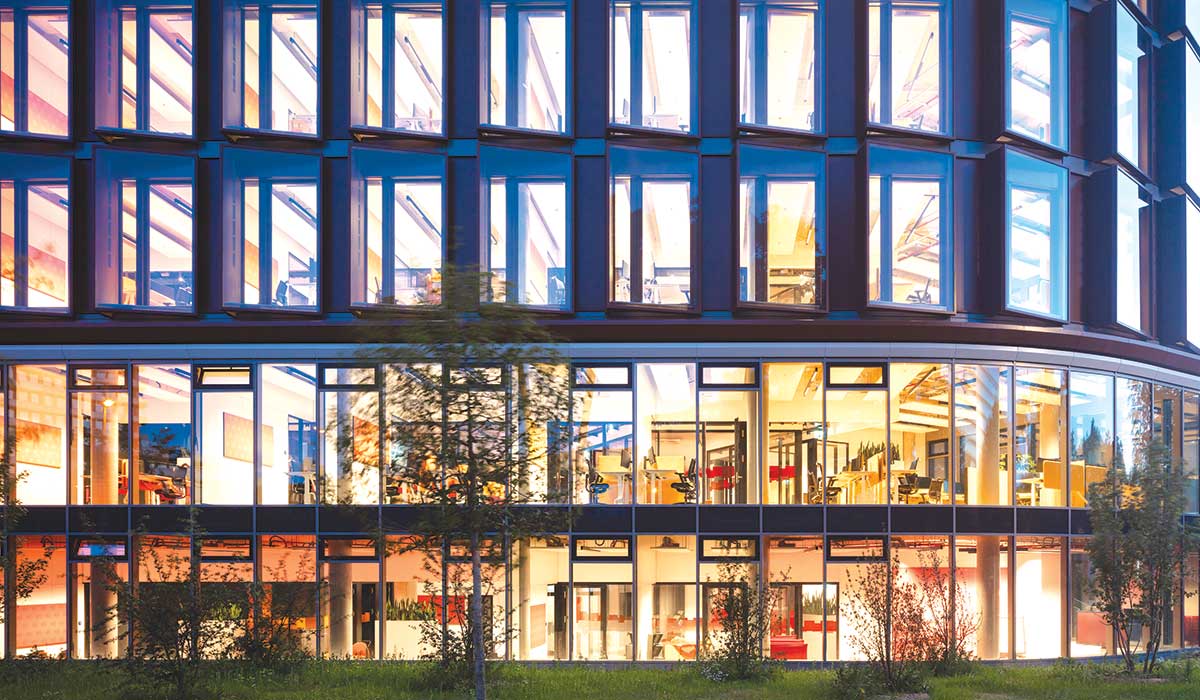
An inviting interior lobby has meeting facilities and a restaurant area. Here, a centrally located skylight provides generous daylight and allows for vertical views to the southern part of the tower facade.
The backbone of the vertical campus, in terms of its spatial organisation and physical connection of programmes, is a three-dimensional helix. A series of interior atrium spaces spiral upwards along the facade of the building. This connects various office programmes and culminates in a panoramic roof garden, which can be used for social events.
In contrast to the regular grid of typical facades, the helix structure and its effect of clustering programmes vertically, is made visible from the outside. Large-scale and plain facade portions pronounce the volumes of the atria programmes to the outside. As such, a higher degree of transparency in the facades renders the position, scale and activity level of the programmes behind readable from outside, while from inside out, the atrium facades frame scenic views of the surrounding city.
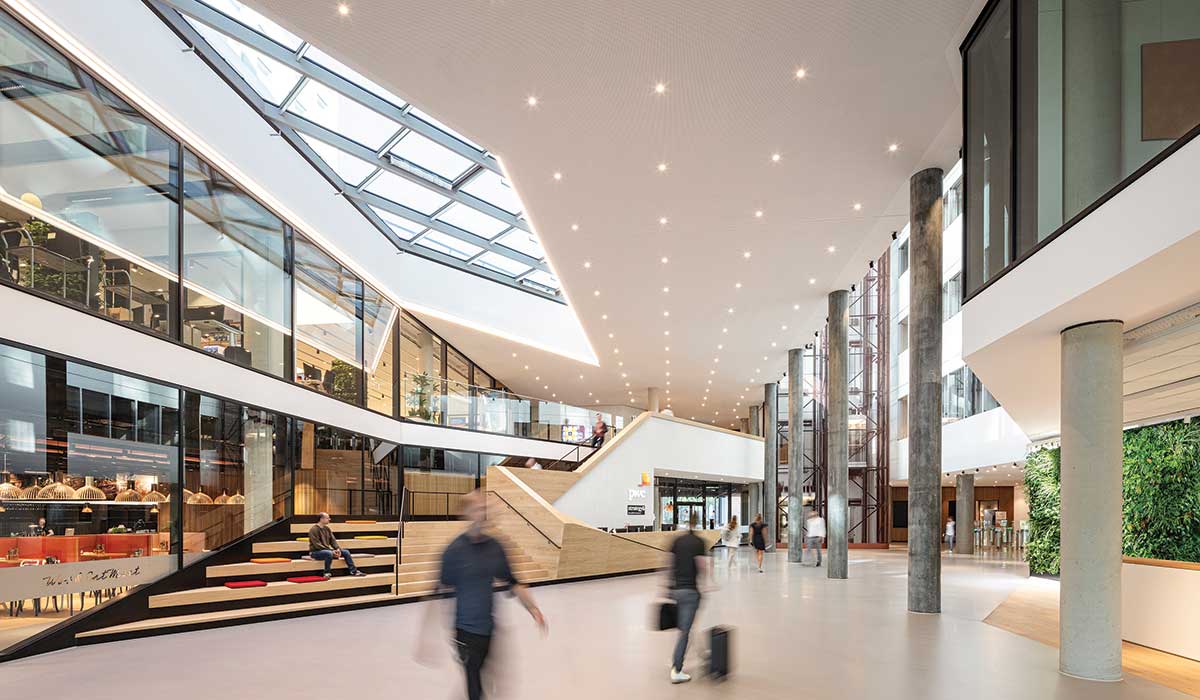
In addition to the provision of individual workspaces throughout, the atria host collaborative, informal working spaces, and breakout areas. The individual offices have excellent daylight access and are highly flexible. They are designed to allow for adaptation into landscape-office, cell-office, or a mix thereof.
In addition to the passive sustainable measures undertaken in the design, Eclipse will be equipped with ‘smart engine’ technology. The technology is controlled by sensors that manage a variety of functions. Daylight, artificial light and room ventilation are all controlled by individual human presence. This is made possible by 2,000 sensors that collect data in real time and transmit it to the ©smartengine. As a result, up to 200 tons of CO2 savings per year can be achieved in a building of this size, which makes Eclipse a particularly sustainable office building.
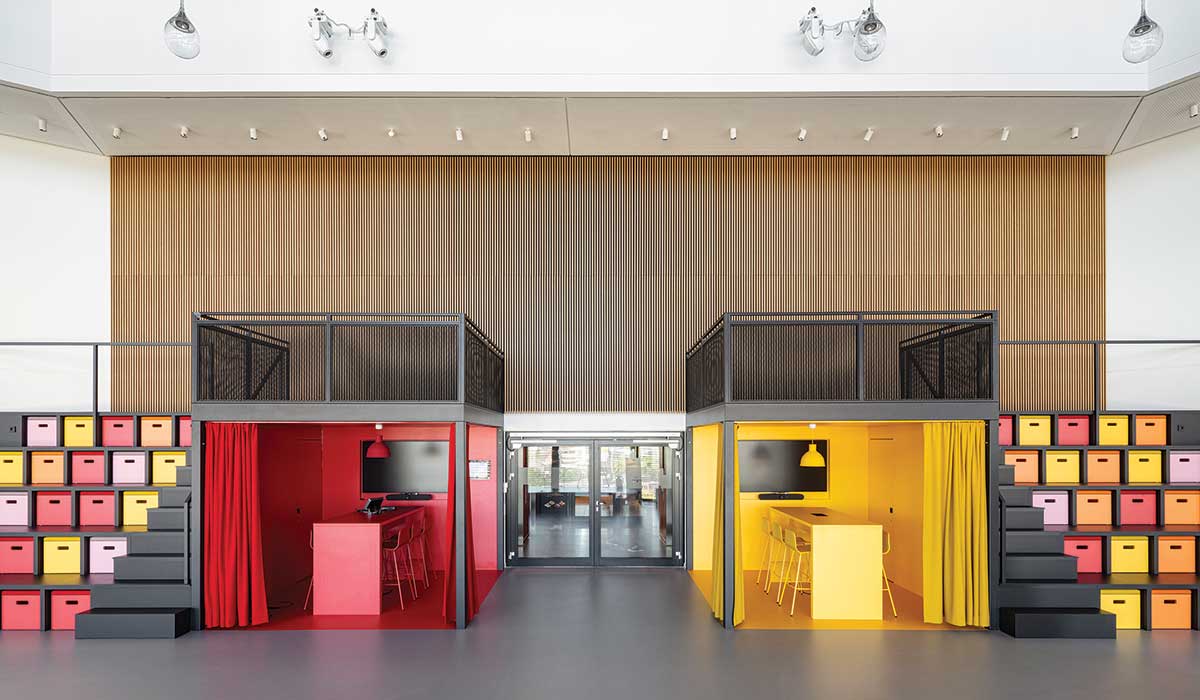
With over 200 parking spaces for bicycles and charging stations for e-cars, the building also contributes to the urban mobility of the future. The interior spaces alternate between concentrated work in cellular offices, while recreation zones function as meeting places. The layouts are flexible and reversible and as such can respond to future requirements.
For Eclipse, not only a DGNB Platinum certification is planned, but also DGNB Diamond: the highest recognition for design and building culture quality.
Pics courtesy: H.G. Esch

